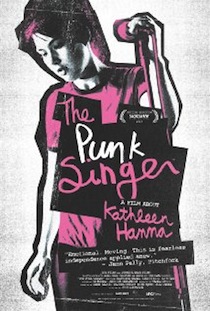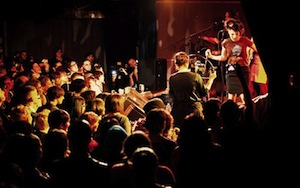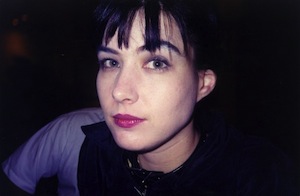 What happened to Kathleen Hanna?
What happened to Kathleen Hanna?
This is the central question that drives the new documentary The Punk Singer.
Kathleen Hanna, the provocative and thoughtful lead singer of bands Bikini Kill, Le Tigre, and The Julie Ruin walked away from the music scene in 2005, leaving behind her a throng of fans, likeminded feminist and DIY activists that pondered her departure.
After posing its central question The Punk Singer dives into an exploration of Hanna’s life up to her departure.
Born in Portland, Oregon, Hanna’s family moved many times as her father pursued work. During her transient childhood she was exposed to feminist thought at a young age by her mother, who took her to a rally at which Gloria Steinem spoke.
 Hanna pursued a degree in photography at the Evergreen State College in Olympia, Washington, where she would begin her career as a guerrilla gallery creator, zine maker, feminist thinker and punk singer.
Hanna pursued a degree in photography at the Evergreen State College in Olympia, Washington, where she would begin her career as a guerrilla gallery creator, zine maker, feminist thinker and punk singer.
Her rise in the independent music scene coincides with the inception of third-wave feminism in the early 1990s, and Hanna made a perfect poster child for the new movement. Hanna was not only a founding member of the Riot Grrrl movement, which called for a girls to the front attitude within the male dominated music culture, but Hanna also promoted inclusivity in terms of sexuality, sexual orientation, race and ethnicity.
All the sudden questions of gender politics were transformed from women in the workplace to how women viewed their own sex lives, their sexual preferences, and ownership of their bodies. There was also a growing scrutiny of the aggressive sexual predation of women by men that had become culturally ingrained.

In her music and on stage, Hanna openly questioned the rape culture that she saw all around her. So you can see that for such a passionate and timely voice to just disappear in 2005 was disturbing to an entire group of young feminists and independent music enthusiasts.
It turns out that Hanna had been ignoring personal illness for some time and it had finally caught up with her.
The Punk Singer breaks into two parts, the rise of a young feminist voice in a male dominated music scene, and the struggles of an all too human individual coming to grips with her physical limitations. Both stories are important, but the structure of the documentary underserves the personal story by playing up Hanna’s cultural importance. Some intermingling of thematic elements could have made for a more interesting and more complex bridge between the two subjects.
The quirkiness in the editing does not diminish the subject matter, and The Punk Singer makes a detailed introduction not only to the indie music, which was threatening to takeover in the early 1990’s, but also a solid introduction to third-wave feminism and one of its early young voices.







{ 1 comment }
Good review, Trey. I had a similar take on this when I saw it at SIFF a few months ago. I thought that the absence of any talking heads from outside the Riot Grrl scene, and the almost total absence of men in the doc (minus Hanna’s husband) also underserved it.
Comments on this entry are closed.